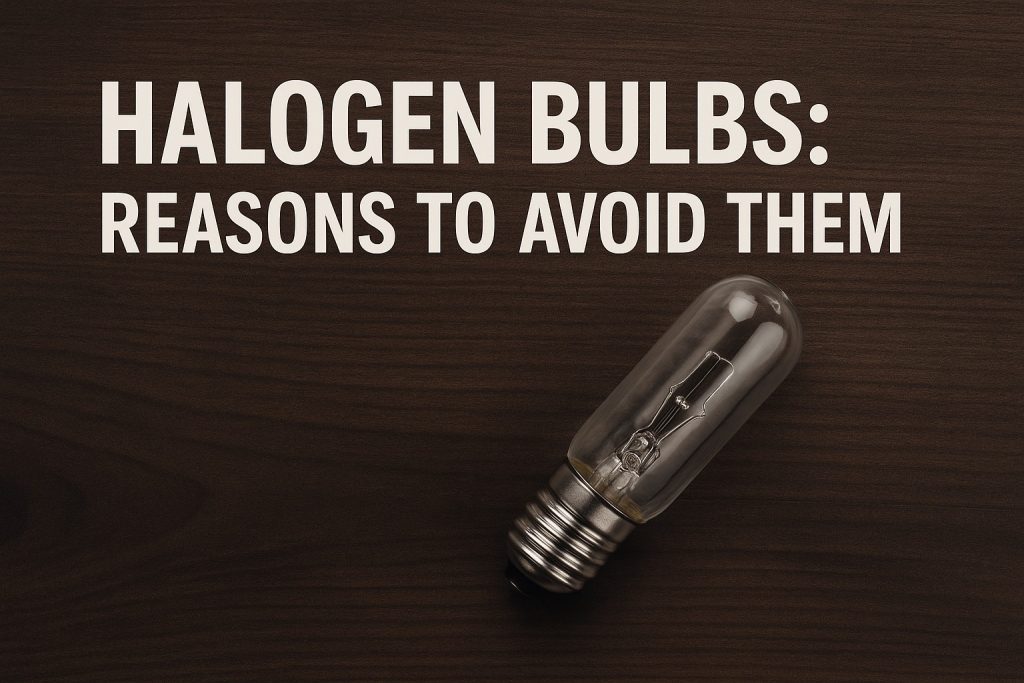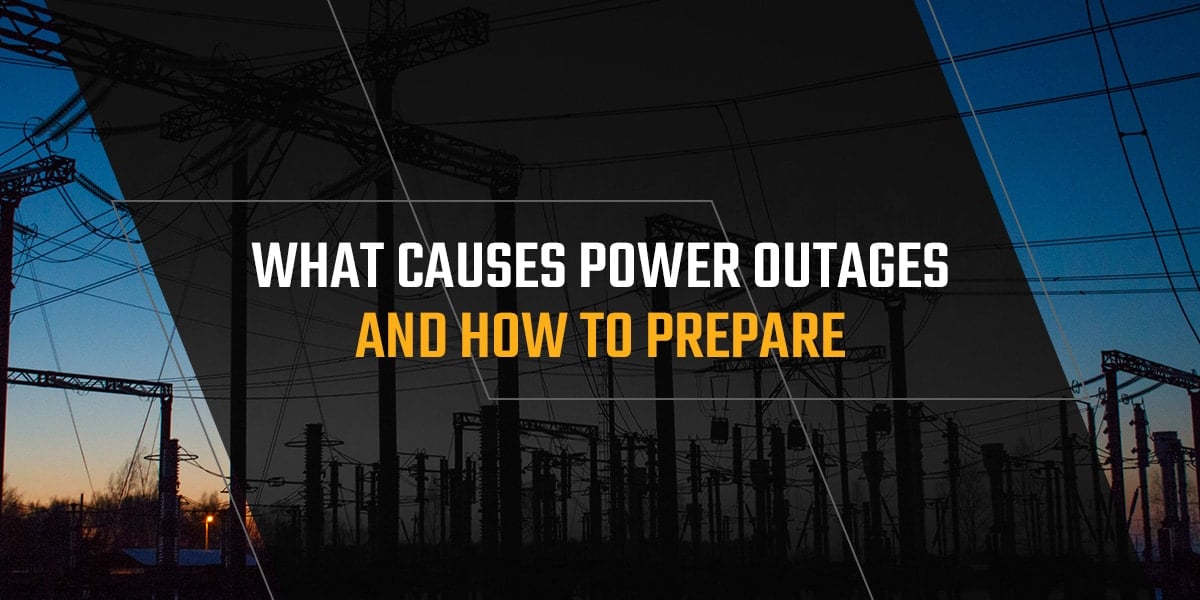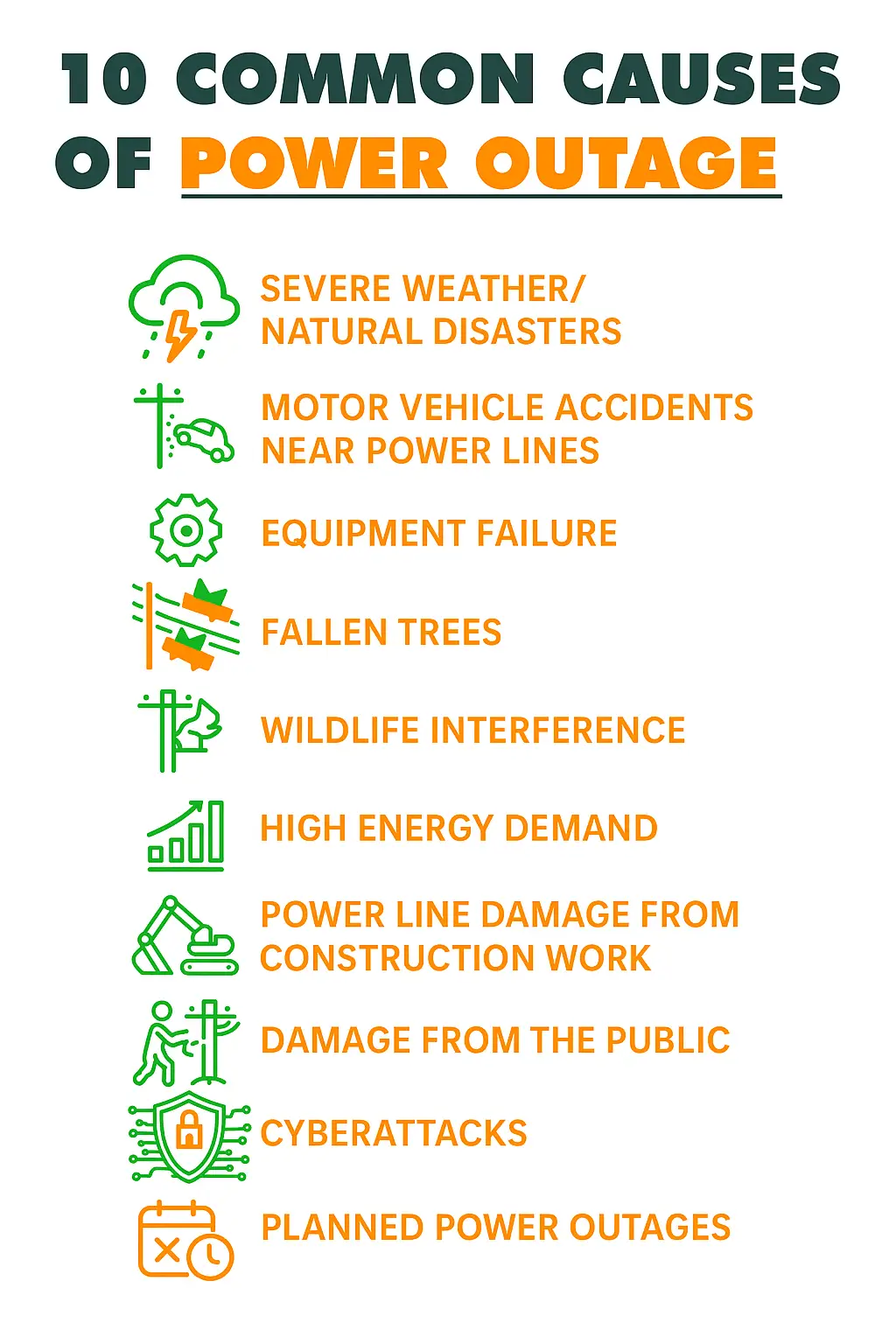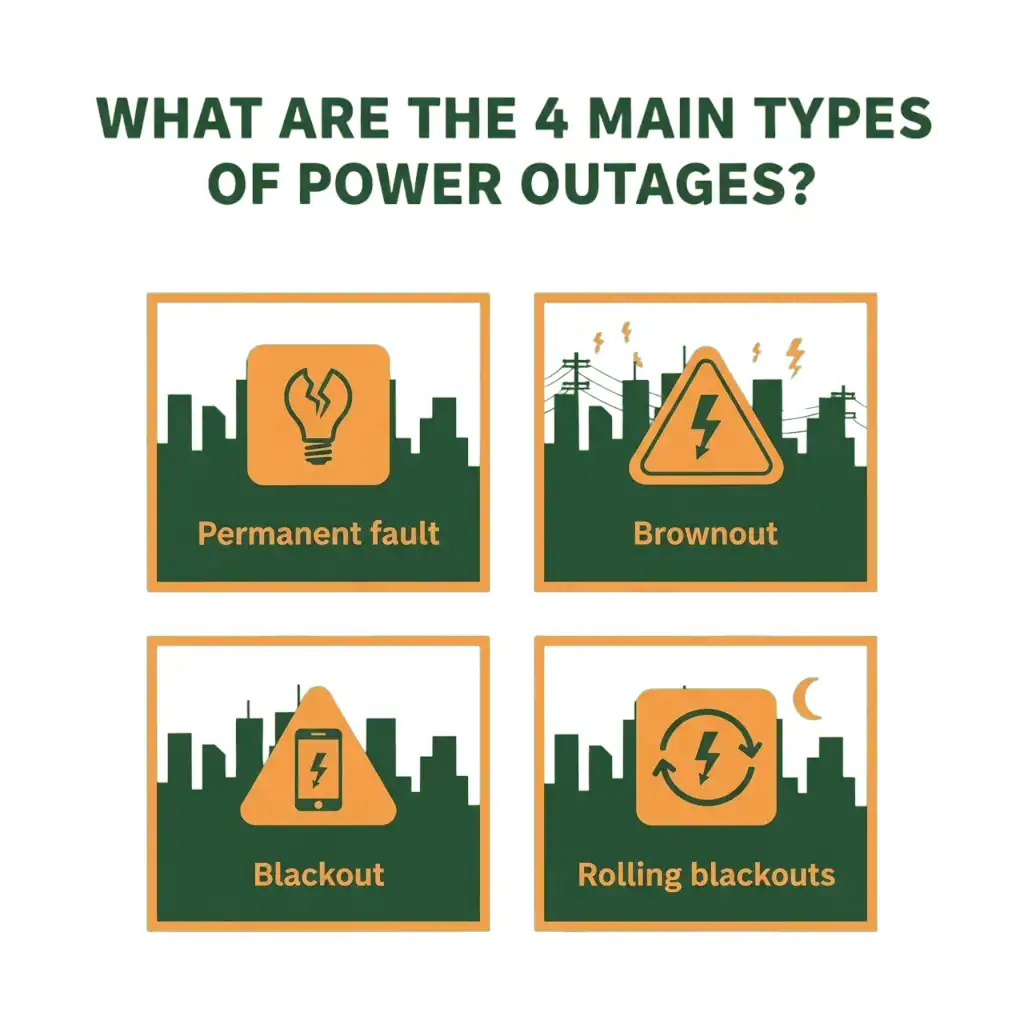
Lighting is a crucial aspect of every home or office, not only for visibility but also for safety, comfort, and […]

A power outage (or blackout) is when your home, business or an entire neighbourhood stops receiving electricity due to an interrupted power supply.
It usually happens suddenly without a warning and finds most of us in the middle of something. Maybe cooking, bathing or charging your devices and hoping they hit 100%.
That’s the moment when we start realising just how much we really depend on electricity to manage comfort, safety and everyday routines.
When there’s a blackout, the whole house/ business falls silent and you are left staring at darkness. You can absolutely feel the waiting, whether short-lived or prolonged.
The duration usually depends on its causes. In some cases, it can last for a few minutes especially if the cause was just a brief technical glitch that’s fixed quickly.
Other times, it could be a bigger issue like a damaged power line, faulty equipment or extreme weather that needs more time to repair.
No matter the cause and how long you wait, power outages serve a very critical role of reminding you that you should always be prepared with an alternative source of power to keep you going until the issue resolves.
In this article, we will help understand exactly why power outages happen, and offer practical ways to prepare, so you’re not caught off guard the next time there’s a power interruption.
In a country like Australia, with one of the most sophisticated energy systems in the world, why do blackouts and power outages continue to be a nuisance?
What exactly are the reasons behind such disruptions?
The causes are more complicated and varied than you may think. The most common causes of power outages in Australia are discussed in further detail below.

Mild weather isn’t exactly what Australia is known for. It might be quiet for one minute, and then you’re dealing with storms, heat waves, and bushfires. Unfortunately, the power lines are not always able to withstand the strain.
The system suffers when everyone turns up the air conditioning during a heat wave. That amount of pressure all at once is simply too much for the grid to handle.
Then there are storms, which cause cables to be ripped down, poles to break, and trees to collapse. Floods can sometimes wreck the underground stuff, and lightning can fry a transformer in seconds.
Last but not least, bushfire season makes the power companies shut the systems down intentionally to keep the power lines from sparking more fires.
Stay ready: Watch local weather alerts; charge your phone/laptop/power bank; keep a battery radio handy.
Protect your gear: Use surge protectors during storms to safeguard valuable electronics.
Ease grid stress: On hot days, limit electricity use; rely on fans, switch off unused lights, and cool your home earlier to take advantage of off-peak rates.
Australia is home to some amazing wildlife.
However, these companions with whom we share our homes can occasionally cause some mayhem, particularly when it comes to our electricity. In fact, statistics show that 10-20% of power outages in Australia are caused by animals.
While birds construct nests close to transformers and circuit breakers, squirrels gnaw through wires and cables, causing damage to equipment and disruptions to the electrical power supply.
Additionally, power outages are frequently caused by overgrown trees and plants colliding with electrical lines and poles.
Over time, rapidly growing trees that are not appropriately pruned back from infrastructure cause lines to deteriorate.
To prevent these problems, utility companies and the consumers of electricity must work in tandem.
Overload situations, ageing, and wear and tear on the electrical infrastructure can all cause failure of equipment and power outages.
The lifespan of the electrical grid and its constituent parts, such as transformers and generators, is limited.
The likelihood of failure rises as components deteriorate and corrode over time. Older technology that hasn’t been updated or replaced is more likely to break down.
Also, as mentioned above, demand that surpasses the rated capacity of gearbox lines, transformers, and generators (on extremely hot days) puts stress on the machinery and leads to malfunctions.
Since one malfunctioning component increases the burden on nearby equipment, grid overload also causes cascading failures.
Circuit breakers and fuses are examples of protective electronic devices designed to prevent this, although their efficacy is diminished by age and neglect.
Big trees are part of what makes the Australian landscape so beautiful and recognisable. We thank towering gums, wattles, and paperbarks for their beauty and shade.
However, when wild weather rolls through, the same tree turns into a serious hazard.
A single heavy branch or a weakened trunk is enough to pull down power lines and cut electricity to an entire street in moments.
In suburbs lined with tall gums, it’s almost expected during storm season; the lights flicker, there’s that loud crack outside, and before you know it, the neighbourhood’s gone dark.
Out in regional areas, it can take even longer to restore power, with muddy tracks and fallen debris making it hard for repair crews to reach damaged lines.
How to be prepared:
Across Australia, vehicle accidents are a surprisingly common cause of power cuts. A single crash involving a power pole can interrupt electricity for hundreds of homes in seconds.
It doesn’t always come down to driver error. The accident can result from wet roads, poor visibility, or someone swerving to avoid wildlife.
Once a pole is damaged, all the connected lines might be affected, causing a blackout in a wider region.
Unfortunately, fixing such a blackout can take longer, causing more inconveniences.
The reason is that crews must first obtain safety reports from emergency agencies and energy authorities before any repairs begin.
How to be prepared:
When the weather turns extreme, the grid feels it just as much as we do.
Everyone switches on heaters, air conditioners, and fans at the same time. The strain builds quietly until – click – the system can’t keep up.
On hot summer afternoons, air conditioners are the main culprit.
In winter, it’s electric heaters running full blast. Power companies do their best to manage the load, but when demand spikes too fast, outages can roll through one suburb after another.
How to be prepared:
Construction crews work carefully, but sometimes the unexpected happens.
A backhoe digs a little too deep. A crane clips a wire. Suddenly, the area goes dark. It’s usually accidental — cables underground aren’t always where maps say they are.
Even small-scale projects, like installing a new fence or planting large trees, can hit hidden lines.
These incidents are more common than most people realise, especially in older suburbs where infrastructure has shifted over the years.
How to be prepared:
Not every outage comes from bad luck or bad weather. Sometimes people are the problem. Vandalism, theft of copper wiring, or even someone crashing into a roadside box can take out power across several streets.
There are also smaller incidents like someone trimming a hedge and accidentally hitting a cable.
They don’t make the news, but they happen more often than you’d think. The frustrating part is that many of these blackouts could’ve been avoided with a bit of care.
How to be prepared:
The power grid isn’t just metal and wires anymore. It’s software too.
That means hackers can, in theory, cause big trouble without ever leaving their keyboards. It’s rare, but as systems become more digital, the risk grows.
Thankfully, power companies know this.
They build layers of protection to keep the lights on, but nothing’s perfect. A large cyberattack could still knock out power temporarily, and that sort of outage can feel unsettling because it’s invisible.
How to be prepared:
Unlike most blackouts, planned outages are done on purpose. The reason is usually maintenance, upgrades, or safety checks. A planned outage is the only time you can see a power cut coming.
You’ll get a message or letter in advance, but it still throws your routine off.
Coffee machines, Wi-Fi, and washing machines all feel useless for a few hours. The good thing is that these outages prevent far bigger problems later.
How to be prepared:

Of all the power outages, a blackout is the biggest one. It’s a total shutdown. Everything goes dark, and suddenly, silence. No fridge hum, no heating/cooling, no charging, no Wi-Fi, nothing.
A blackout usually happens when there’s a massive fault in the grid. Maybe a storm took down key lines, or a major transformer blew.
Regardless, it can affect entire towns or even whole regions, and depending on the cause, it might last from a few minutes to several hours (sometimes longer, if you’re really unlucky).
It’s the kind of outage that makes people grab their flashlights and start texting friends to see if it’s “just them.”
Now this one’s tricky. The power doesn’t go off completely, but things start acting weird. The lights get dim, the fans slow down, and your fridge sounds like it’s sighing. That’s a brownout.
It means there’s less voltage than usual, kind of like your appliances are running on half energy. It’s often done on purpose when the grid’s overloaded, just to stop it from collapsing.
But yeah, it’s not great for electronics. If you notice it happening, unplug the TV and computer. They can blow if they’re left on
Now this one feels organised, but still irritating.
A rolling blackout is when a utility company intentionally shuts off power in specific areas for short periods, one after another. It’s a bit like taking turns being in the dark.
They do this to prevent the entire grid from collapsing when demand shoots past what the system can handle. So your neighbourhood might be out for an hour, while another area stays on.
Then they swap. People don’t love it, but it’s better than a total collapse that could take days to fix.
This one sounds dramatic, but it’s really just a localised outage. Think of it as a short circuit or a fallen line that knocks out electricity in one specific area.
The key difference? Once the issue, say, a tripped line or damaged transformer, is fixed, power pops right back on.
It’s not widespread, and usually, it’s resolved fairly quickly once maintenance teams find the problem. It’s the kind of outage where your street might go dark while the next block is perfectly fine.
Power outages can be inconvenient; however, they can have serious effects, both on a person and the environment.
Extreme weather, whether it is storms, heatwaves, floods, or bushfires, is increasing in frequency. Preparation begins with the following:
Before;
Long-term planning;
Infrastructure problems are beyond our direct control, but there are methods to be informed.
For information on scheduled maintenance outages in your region, visit the website or social media accounts of your electrical provider. This enables you to mitigate any inconvenience and plan well in advance for any disruptions.
The main reasons for power outages and supply disruptions are severe weather, animal interference, and equipment failure.
Understanding the causes of power outages in your area enables you to limit risks by taking precautionary actions, such as keeping vegetation surrounding power lines in a healthy state and keeping electricity consumption in check on very hot days.
As consumers of electricity, knowing what causes power outages is important as it empowers customers to take preventive measures, make well-informed decisions, and strengthen their resistance to the causes of blackouts.
In Australia, the frequency and length of power outages can vary depending on a number of factors, such as the area, the climate, and how reliable the local electricity infrastructure is.
To preserve cold air for as long as possible, refrigerators should not be opened.
You should prioritise using perishable foods before turning to canned and non-perishable items.
In order to save fuel, backup generators should only be used for necessary tasks.
Also, when the power is automatically restored, turn off electrical devices to prevent harm from surges.
Depending on the size and source of the blackout, the time it takes to restore electricity can vary significantly. Localised outages, which are often caused by fallen branches or animals interfering with the equipment, may be fixed in a matter of hours.
However, it may take days or weeks to completely restore the electrical supply after severe weather events that damage transmission lines and other vital infrastructure.